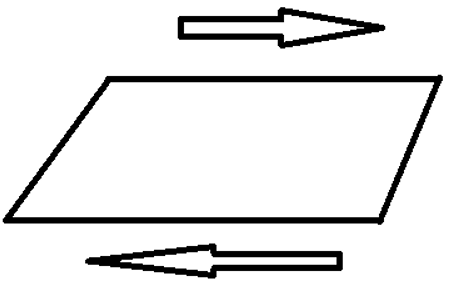This set of Petroleum Production Operations Multiple Choice Questions & Answers (MCQs) focuses on “Fractures and Joints in Reservoir Rocks”.
1. Reservoir rocks may get fractured by which of the following forces?
a) Tensional and Adhesive forces
b) Tensional and Cohesive forces
c) Compressive and Tensional forces
d) Compressive and Cohesive forces
View Answer
Explanation: Reservoir rocks may get fractured by Compressive and Tensional forces. Tensional force is the force that basically tries to pull the system and acts away from it; on the other hand compressive force is the force that compresses the system. An example is anticline fold.
2. How many types of Stresses do we consider in the geology of reservoirs?
a) 1
b) 2
c) 3
d) 4
View Answer
Explanation: There are 3 types of Stresses we consider in the geology of reservoirs. These are shear stress, compressional stress, and tensile stress. The stress which tries to pull the system and acts away from it is called Tensile stress and the stress which tries to compress the system and acts in opposite direction perpendicular to a plane under consideration is called a compressional stress and the stress which acts in opposite direction parallel to a particular plane is known as shear stress.
3. Joints influence hydrocarbon migration.
a) True
b) False
View Answer
Explanation: The statement is true because joints influence the porosity and permeability which affect the fluid flow mechanism through the rock’s porous media.
4. What is the name of a joint with a large aperture?
a) Fissure
b) Fracture
c) Layer
d) Tunnel
View Answer
Explanation: The name of a joint with a large aperture is known as Fissure. Any separation in a geologic formation is called a fracture e.g. joint and fault.
5. Joints that run obliquely to the dip and strike directions of the country rock are known as which of the following?
a) Dip Joints
b) Oblique Joints
c) Bedding Joints
d) Strike Joints
View Answer
Explanation: Joints that run oblique to the dip and strike of directions of the country rock are known as Oblique joints. When the joint is parallel to the direction of dip of country rock then it is termed as Dip Joint. If the joint is parallel to the direction of the strike then it is called Strike Joint. Bedding Joints are parallel to the bedding plane having the same strike and dip.
6. Which type of stress is this?

a) Tensile
b) Compressional
c) Shear
d) Normal
View Answer
Explanation: Stress which acts in the opposite direction parallel to a particular plane is known as shear stress. It is clear from the diagram is that two forces are acting in the opposite direction on the body under consideration.
Sanfoundry Global Education & Learning Series – Petroleum Production Operations.
To practice all areas of Petroleum Production Operations, here is complete set of 1000+ Multiple Choice Questions and Answers.
If you find a mistake in question / option / answer, kindly take a screenshot and email to [email protected]
- Check Chemical Engineering Books
- Apply for Chemical Engineering Internship
- Practice Chemical Engineering MCQs
- Check Petroleum Production Operations Books
